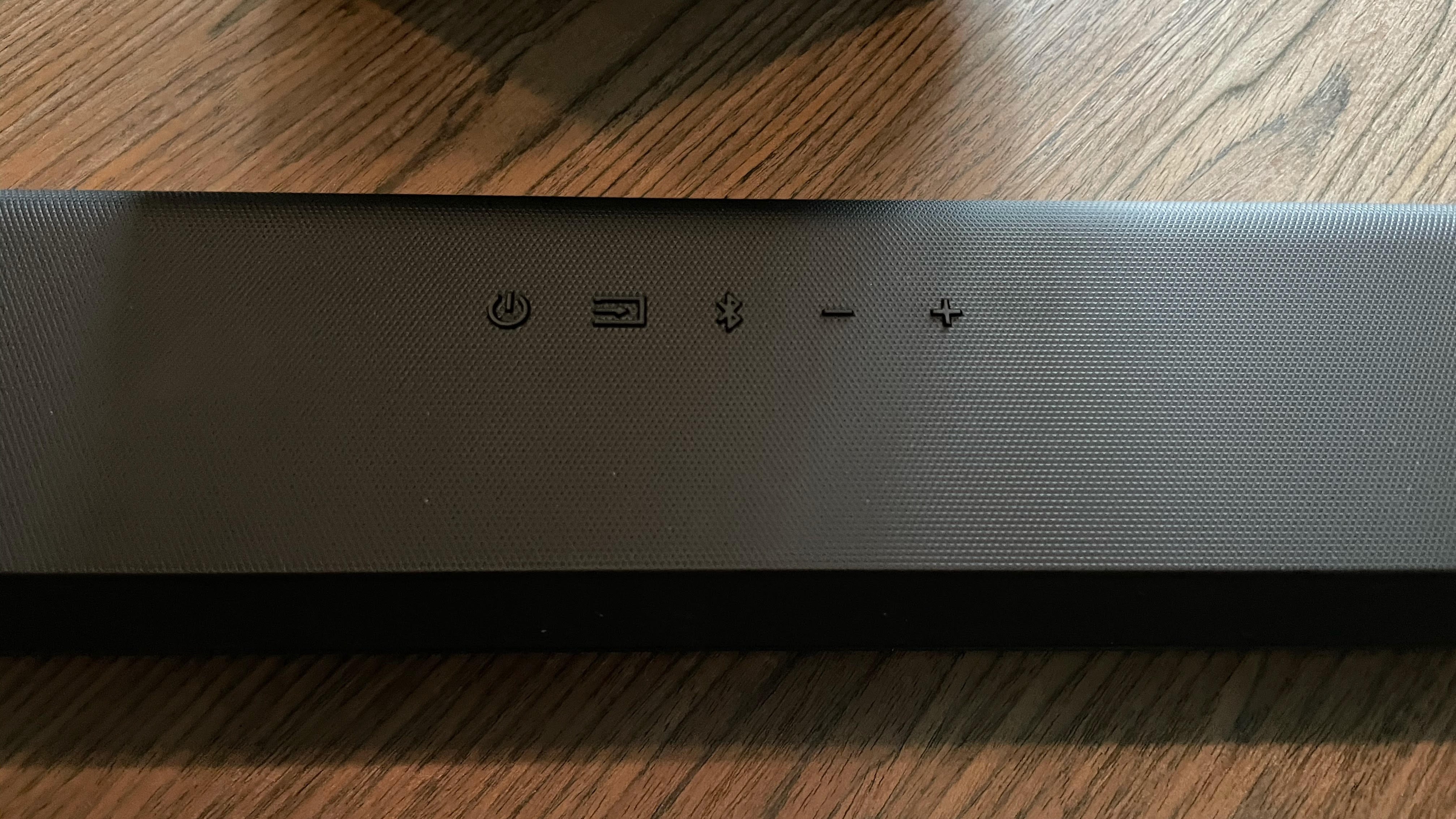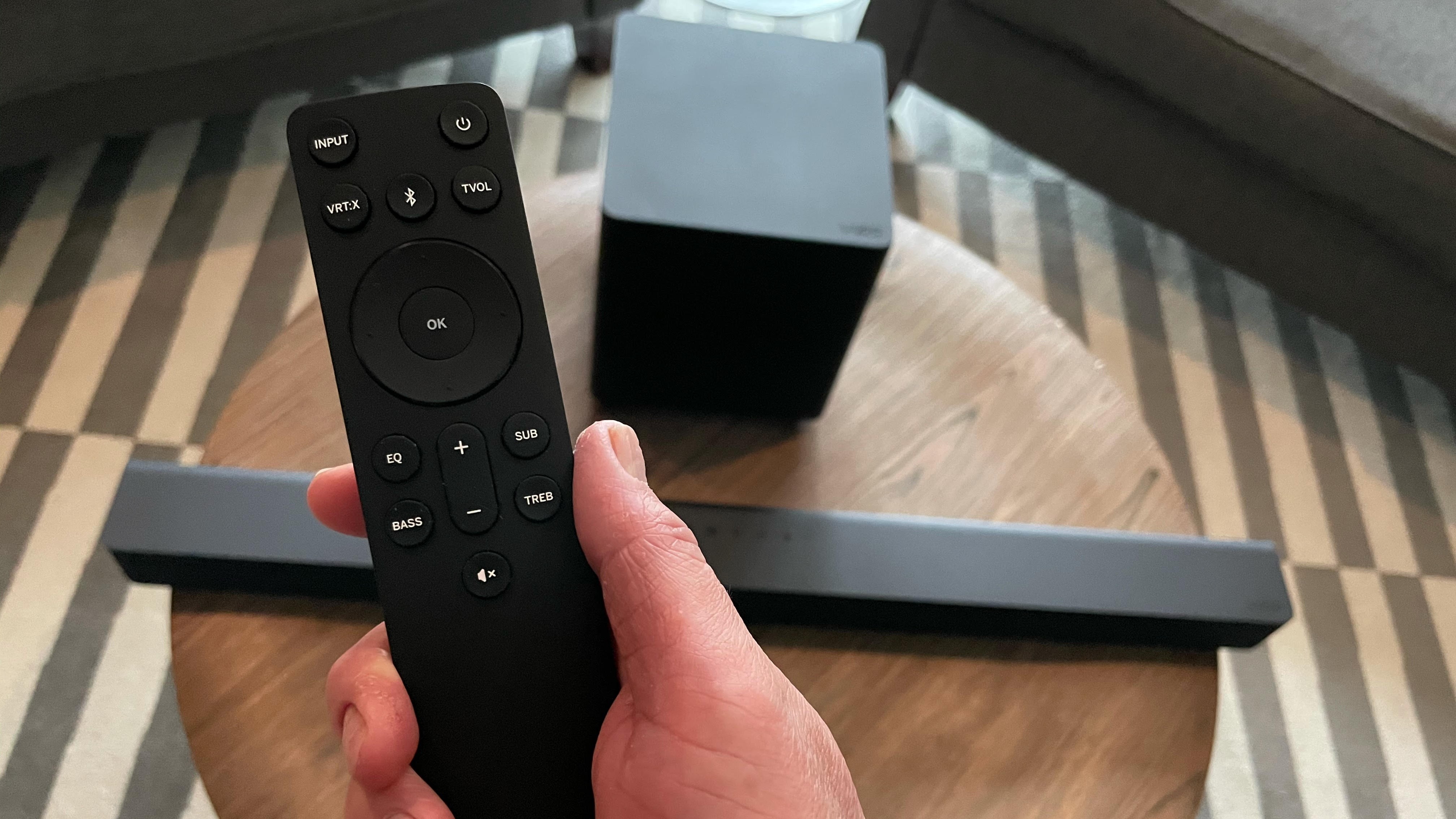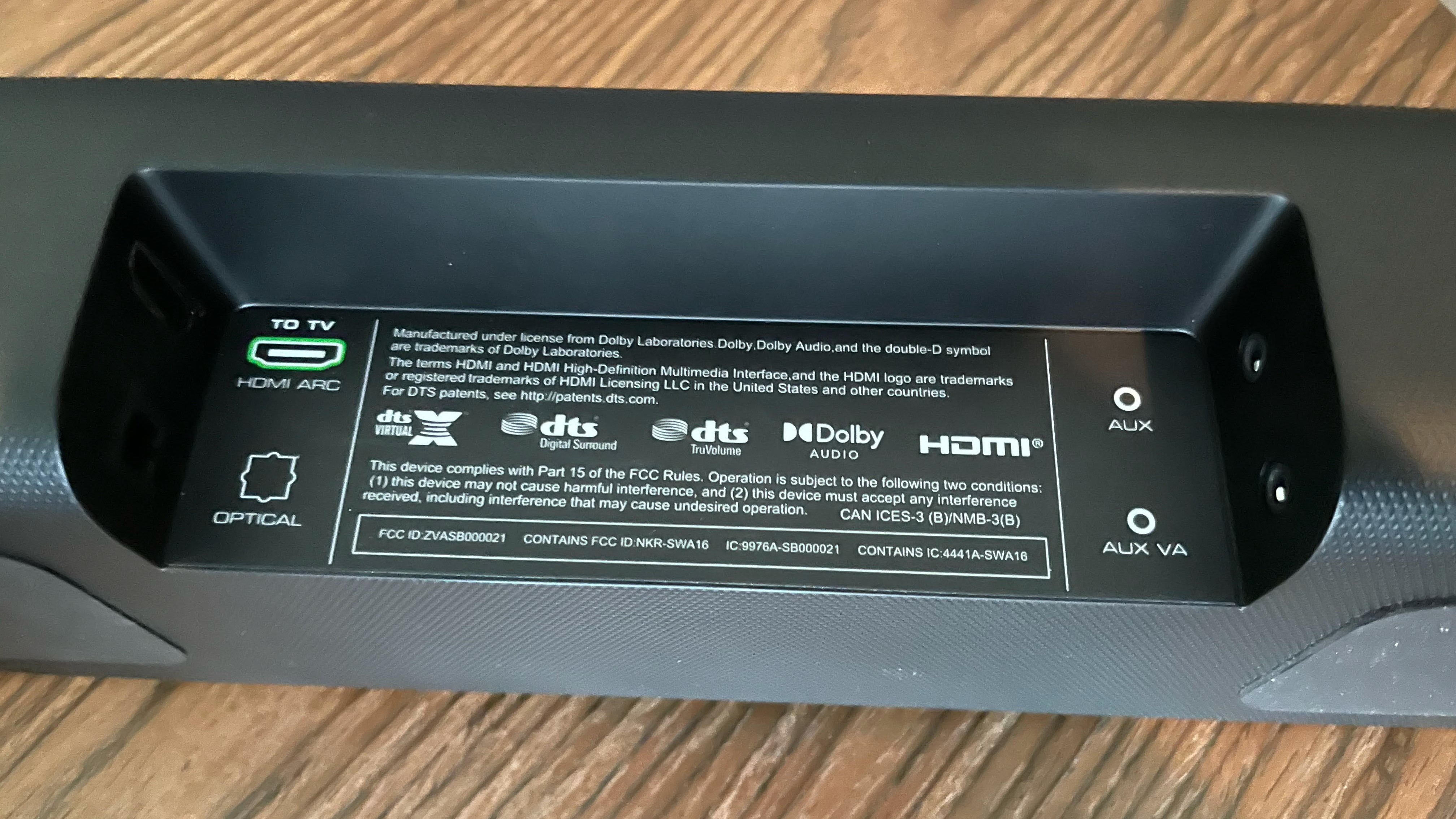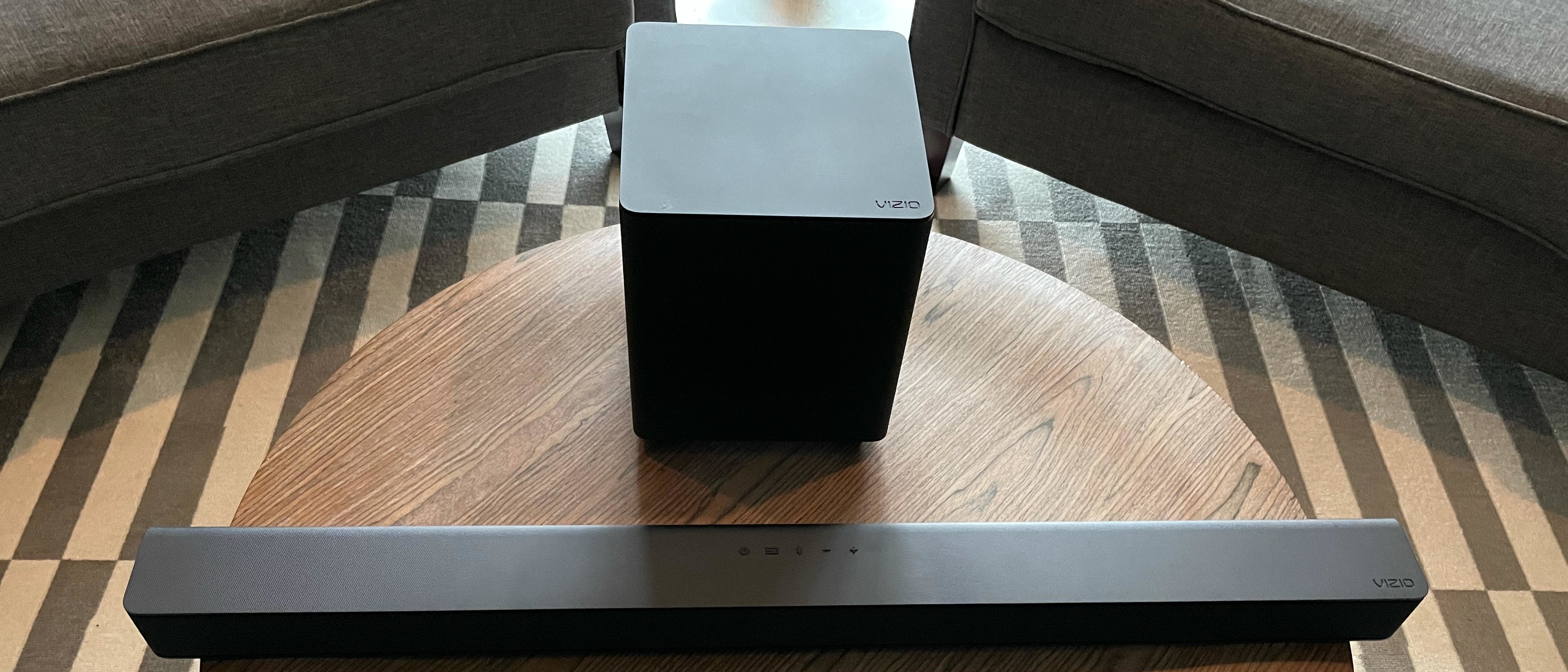Tom's Guide Verdict
Vizio’s latest inexpensive soundbar delivers wide sound, big bass and plenty of options.
Pros
- +
Wide soundstage
- +
Lots of audio and input options
- +
Affordable
Cons
- -
Bass can overwhelm voices
- -
Dolby Audio support through optical digital only
Why you can trust Tom's Guide
With affordable soundbar options like the Vizio V-Series 2.1 Home Theater Soundbar V21-H8, there’s really no excuse to suffer the tinny sound that comes out of most TVs. While there are several choices in the sub-$200 range, quality isn’t always guaranteed. Vizio has earned a rep for producing excellent, inexpensive soundbars — and its latest 2.1 model, which comes complete with a wireless subwoofer, continues that tradition.
The V21-H8 offers plenty of ways to connect, including HDMI, and lets you tweak the audio with more options than most budget soundbars. And its small subwoofer delivers a ton of bass — sometimes too much. Still, with its flexibility, the V21-H8 might be the best affordable soundbar for most people. Read on for our full Vizio V21-H8 review.
- Check out the best soundbars under $100
- Our picks for the best cheap soundbars
Vizio V21-H8 review: Design
With its nondescript looks, the V21-H8 does an excellent job blending in to your home theater set up — who wants the soundbar to distract from what’s on the TV? The main 36 x 3.3 x 2.2-inch soundbar is a slim, black rectangle. Similarly, the small-but-mighty, 9.9 x 8.3 x 8.3-inch subwoofer is easy to hide.

The soundbar has buttons on top for power, input, Bluetooth and volume. On the back you’ll find a bevy of inputs, which is rare for a cheap soundbar: one HDMI input, optical digital audio, USB, a standard 3.5 mm auxiliary input and a 3.5 input labelled "Aux VA" that is intended to connect to an Alexa, Google Assistant or Siri smart speaker. The Aux VA input allows you to use your chosen voice assistant while using another input to listen to your TV sound — a clever workaround to the lack of a voice assistant being fully built-in to the soundbar.
The V21-H8 uses LEDs on the left front of the speaker to indicate various functions, such as volume level, subwoofer level and sound mode (a voice also tells you which input or sound mode you’re in as you switch).
The V21-H8 comes with a redesigned remote — reminiscent of an Amazon Fire TV remote in style — that is comfortable to hold and packed with buttons. It has a circle in the center for next, previous, up and down, as well as buttons for sound mode (EQ), bass and treble, and subwoofer level. It also has discrete buttons to turn on DTS Virtual:X and DTS TruVolume.
Vizio V21-H8 review: Performance
The V21-H8 delivers good overall sound, with clear voices and full midtones. Lady Whistledown’s gossip voiceover in Bridgerton was easy to understand, although lacking a bit of resonance.
The best thing about the V21-H8 is how wide the sound feels when using DTS Virtual:X. While it doesn’t support Dolby Atmos, it produced a bigger and more encompassing sound than most budget soundbars can manage. Soundtrack music is especially noticeable thanks to this feature.

The small subwoofer generates a lot of bass, though the low end lacks precision and can sound muddy. When a certain Jedi fights the Dark Troopers in The Mandalorian, dramatic music swelled to fill the room and the subwoofer made the stomps of the troopers and the Force pushes feel tangible. In Avengers: Infinity War, the floor rattled satisfyingly as Thor brought the lightning down in Wakanda.
The V21-H8 works better for movies than music, but mainly because the subwoofer kicks out too much bass when listening to songs. On Billie Eilish & Rosalia’s “Lo Vas A Olvidar,” each vocalist sounded rich, but when the bass kicked in, it overwhelmed the mix; the same happened on The Weeknd’s “Blinding Lights.” When I turned the sub as low as it could go without turning off, the balance was better.
The V21-H8 gets loud enough to fill most rooms. It measured about 88 decibels at max volume and didn’t sound distorted at that level — another rarity in a budget soundbar.
Vizio V21-H8 review: Setup
The V21-H8 is simple to connect. If you have a TV that supports HDMI ARC, a single HDMI cable will have you up and running. Oddly, if you want to take advantage of the unit’s Dolby Audio support, you’ll need to connect by optical digital audio instead of HDMI.

Once you’re connected, you’ll want to explore the V21-H8’s many options to find the best sound for your ears. Vizio doesn’t offer an app to control the soundbar, so you’ll use the remote to adjust the sound. There are sound modes for Movie, Music, Game and Dialog. You can also enable DTS Virtual:X for a surround sound effect and DTS TruVolume to balance loud and soft audio in a movie or TV show. You can separately adjust bass, treble and subwoofer levels, as well.
I found that I most enjoyed the combination of DTS Virtual: X, DTS TruVolume and Dialog sound mode; Movie mode buried voices too much in the mix. And, unfortunately, the V21-H8 defaults to Movie mode each time you turn it on.
Vizio V21-H8 review: Verdict
You get a lot for your money with the Vizio V-Series 2.1 Soundbar V21-H8. It delivers impressive sound for a sub-$200 soundbar-and-sub combo, especially when watching movies and TV shows. The little subwoofer cranks out a ton of bass, and while it can sound muddy, having any bass in an inexpensive soundbar package is a bonus. With features like DTS Virtual: X and the ability to adjust the sound, you’re likely to find a sound combination that pleases your ear.
If you’re willing to spend a little more, Yamaha’s YAS-109 will provide more balanced sound without as much work on your part. The YAS-109 also includes Amazon’s Alexa and produces good bass without the need for a separate subwoofer — but not as much bass as the V21-H8. And the Vizio soundbar does a better job filling the room with sound thanks to DTS Virtual:X. If you don’t want to spend much to improve on the sound coming out of your TV, the V21-H8 represents seriously good value.

Michael Gowan is a freelance technology journalist covering soundbars, TVs, and wireless speakers of all kinds of shapes and sizes for Tom’s Guide. He has written hundreds of product reviews, focusing on sound quality and value to help shoppers make informed buying decisions. Micheal has written about music and consumer technology for more than 25 years. His work has appeared in publications including CNN, Wired, Men’s Journal, PC World and Macworld. When Michael’s not reviewing speakers, he’s probably listening to one anyway.

